More Challenges for Modern Pharmaceutical Supply Chains. 2: Stock Has Arrived
)
Supply chains managed by manufacturers, wholesalers, distributors, and other businesses across the pharmaceutical sectors can be complex with a unique set of challenges. Common to many is the need to control and manage stock as it passes through a distribution centre or warehouse. Modern supply chain management (SCM) systems incorporate the core features required for this business-critical supply chain function. The best will also offer enhancements that meet the unique needs of the pharmaceutical, medical device and healthcare sectors, for example to manage flexible sourcing, rigorous regulatory compliance, anti-counterfeiting measures, product traceability, and verifiable provenance.
In this second article in our short series, we look at how SCM systems such as ProSCM Advanced Supply Chain Management Software manage stock once as it arrives at the warehouse or distribution centre.
Managing Inbound Operations
The warehouse management functions of ProSCM often begin working before stock arrives at the facility. Inbound deliveries can be scheduled in advance and suppliers can send predelivery notifications and other information electronically. This can be fed automatically into ProSCM to help the warehouse operator to plan ahead, enabling it to allocate warehouse space and deploy staff and equipment efficiently. As stock arrives the information can be checked against purchase order and predelivery information to verify success or any variances such as missing items, incorrect batch numbers, unexpected pack sizes and many other user-definable parameters. SCMs can also utilise scanning and other technologies to collect new data about incoming stock that will help maximise the potential of warehouse management operations. By storing and building a historic record of incoming stock the analytical and reporting tools in the SCM can help to identify underlying and emerging trends and provide evidence to support change and performance improvement.
Inventory Variance Analysis
A critical element of supply chain management is to identify and understand variances between real and predicted inventory levels. These typically arise due to issues with purchasing, receiving, or inventory management. Common variance types include overage, when inventory exceeds the quantity ordered on the purchase order, shortage, when inventory is less than the quantity ordered, changes in pack size or volume and so on. ProSCM incorporates powerful tools to analyse and identify the root causes of these variances. These can include, for example, purchasing errors such as incorrect quantities or pricing on purchase orders, receiving errors such as miscounting or mis-recording goods on arrival, inventory discrepancies caused by theft, damage, or misplacement, and vendor issues including late deliveries, incorrect shipments, or quality problems.
The application can also assess the materiality or significance of the variance based on its financial impact and frequency. The application can use this analysis to propose corrective actions which can prevent or address the root cause of the variances. It can produce variance reports which compare actual inventory quantities and values against purchase order data. Additional tools include inventory cycle counting to count physical inventory regularly and verify data accuracy, and vendor performance tracking to monitor performance and quality.
Real-time Stock Control & Visibility
One of the key functions of any modern warehouse management application is to support and enable real time operations and data visibility with 100 per cent accuracy. ProSCM manages all key warehouse handling and storage processes and tasks and offers an increasingly sophisticated array of functions and features.
Technologies such as hand-held, truck-mounted, or fixed-position scanners can read barcodes, RFID tags, and other identification devices at every step of the way to ensure the system knows the precise location of every item at all times.
Advanced features such as dynamic task allocation and rules-based operations help to maximise productivity, efficiency, throughput, and utilisation of space. This requires, and produces, a vast array of information that ProSCM can utilise and analyse to manage the warehouse dynamically for maximum efficiency while providing continuous and real time visibility of stock status. If required, this information can be shared securely and safely in real time with supply chain partners and used to create reports and analyses that can help all stakeholders verify and improve performance
Regulatory Compliance
To maintain regulatory compliance and business continuity, businesses in the pharmaceutical and related sectors need to maintain business-critical strict and detailed records of stock passing through the warehouse. This includes, for example, tracking stock by manufacturer, consignment, or batch number at the required level of detail from pallet to case to individual pack, depending on regulatory and/or user requirements.
Another example of SCM capabilities is to provide a complete record of the temperature as items pass through the warehouse, critical for maintaining the integrity and shelf life of many pharmaceutical and healthcare products. SCMs achieve this by interfacing with temperature sensors located throughout the facility and matching that data against the location of the items at all times. The objective is to provide a complete, detailed, and unbroken audit of the stock. ProSCM incorporates a number of features to manage data integrity. Using the system’s rules-based processes allows users to configure these functions very flexibly, for example by supplier, supplier group, quality group, site/facility, product, and even specific ingredients.
Although these features are all highly useful for daily operations, maintaining the integrity of data and related stock can also be an important weapon in the fight against counterfeit or fake medicines.
Automation
Warehouses are increasingly becoming automated. Conveyor systems, picking carousels, automated lift trucks, and automatic guided vehicles have been used for many years but are now joined by smaller and more agile handling devices such as trolleys, dollies, and taxis.
ProSCM can interface with all leading automation technologies to enable and oversee an integrated handling, storage, and picking operation that can enhance efficiency and productivity. This can include, for example, producing documents such as picking confirmation and despatch notes that can be inserted automatically into media such as tote bins and roll cages or attached to wrapped pallets. The system’s advanced features can help to dynamically allocate tasks to eliminate the bottlenecks and pinch points that restrict the smooth operation of the facility.
Managing Outbound Operations
Another critical aspect of warehouse operations is to manage the composition and despatch of orders to customers. ProSCM manages tasks such as order processing, picking, packing, loading, and route planning through its own functionality or by integrating with third-party applications. We will cover this side of the SCM in the third part of our short series next month.
The ideal Supply Chain Management solution
ProSCM Advanced Supply Chain Management Software from Principal Logistics Technologies (an Aptean company) is specifically designed for distributors, wholesalers, and parallel importers operating in controlled environments in sectors such as pharmaceuticals, medical devices and healthcare. It enforces strict adherence to complex business processes that require full auditability and traceability. Users enjoy rich core functionality that can be enhanced with modular options to support and enable affordable and scalable business growth. ProSCM is ideal for businesses faced with intricate purchasing and sales, stock handling and storage rules, and stringent compliance requirements. It can operate standalone or interface to any existing or planned accounting application.
To find out more about how ProSCM is used by pharmaceuticals, medical device and healthcare supply chain businesses read some of our customer case studies here and visit www.principalsystems.com for more information.
NEXT TIME we will look at the benefits of advanced SCM applications as stock leaves the warehouse.


)
)
)
)
)
)
)
)
)
)
)
)
)
)
)

.png/fit-in/500x500/filters:no_upscale())
)
)
)
)
)
)
)
)
)
)
)
)
)
)
)
)
)
)
)
.png/fit-in/1280x9999/filters:no_upscale())
)
)
)
)
)
)
)


